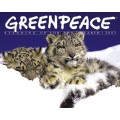In 1969, a few days after the United States detonated a one megaton nuclear weapon at Amchitka Island in the Alaskan Aleutians, the "Don't Make A Wave Committee" was organized in a Vancouver living room containing a small number of people who thought such weapons should not be allowed to make waves through the oceans or atmospheres of the world ever again. Committee members included Paul Core, then a UBC law student, Bill Darnell, a field worker for the federal government's "Company of Young Canadians," Terry Simmons, a member of the Sierra Club studying at Simon Fraser University and two older men, James Bohlen and Irving Stowe. Bohlen and Stowe had left the United States to protest the Vietnam War as well as the nuclear buildup. Bohlen had once designed rocket engines. Stowe was a Quaker and a lawyer. They talked and argued.
One of the arguments was whether to concentrate the committee's efforts on protesting against another Amchitka test planned for the fall of 1971, or to expand their efforts to fight against all threats to the environment. "Peace," said Stowe, a gnome-like man in his late fifties as he left one meeting. It was the traditional greeting and farewell of those involved in the peace activist movement. "Make it a green peace!" said Darnell, the youngster from the CYC.
Yellow and green buttons were made up combining the three-pronged nuclear disarmament symbol with the ecology movement's "E" (for the earth) and "O" (for the organisms that live on it) and sold to raise money. There were fundraising concerts with pop stars Joni Mitchell, James Taylor and the rock band Chilliwack taking part. A boat-the 25-metre halibut packer "Phyllis Cormack"-was chartered to head for Amchitka to try to stop the bomb. The boat, nicknamed "Greenpeace" was forced by weather to turn back. They raised more money and sent a bigger boat, a converted minesweeper named the Edgewater Fortune, which they nicknamed "Greenpeace Too!" (the exclamation point was Stowe's inspiration). Greenpeace Too! was also delayed by November's North Pacific weather and the bomb was exploded while the minesweeper was far away. But when "Greenpeace Too!" returned to New Westminster harbour, what was to become the world's largest, most influential environmental organization was launched. The "Don't Make a Wave Committee" changed its name to the "Greenpeace Foundation. "Greenpeace III" (originally the Vega) sailed to French Polynesia to protest against French nuclear tests in 1972. The Vega, a 12.5-metre handmade ketch, belonged to David McTaggart, chair of Greenpeace International from 1969 to 1973. The Vega. was retired when McTaggart retired after being severely beaten, with others of his crew, during the 1972 protest. Three years later Russian whalers were confronted off the California coast. In Canada Greenpeacers confronted sealers off the East Coast and invaded, by canoe, the Bruce Nuclear power Station in Lake Huron.
In 1978 Greenpeace bought its own ship, a converted North Sea trawler, the Sir Williams Hardy, renamed it the "Rainbow Warrior" and campaigned against whaling in Iceland and Spain. The organization spread worldwide. In 1979 national Greenpeace organizations in Australia, Canada, France, Holland, New Zealand, the United Kingdom and the United States formed "Greenpeace International," which now has headquarters in Amsterdam. There were protests, boycotts and confrontations around the world throughout the 1980s. Greenpeacers zipped about in inflatable boats, flew a hot-air balloon across Germany, hung a banner from the Ottawa Peace Tower, climbed smokestacks and Mount Rushmore in various environmental causes to save whales and porpoises, to stop nuclear power and nuclear bombs. Some members went to jail.
After the French secret service sunk the original Rainbow Warrior in 1985 a second Warrior was commissioned in 1989. Greenpeace operates a fleet of several vessels including converted tugs, fishboats and riverboats.
There are organizations in more than 30 countries with total membership of more than five million and a paid staff of 1,000. Greenpeace now spends more than $40 million each year on its activities. Nuclear explosions and whaling are still concerns, but major campaigns today are against toxic pollution and the destruction of rainforests.
While the efforts of its members and crews of eco-warriors through the past two decades have occasionally disturbed, if not broken, the peace, the organization is now reassessing its activities. Some current members argue that environmental issues are more complex and require different tactics than in the 1970s. It is possible to mount challenges and present alternatives in the boardrooms of corporations that are now, thanks to the efforts of the eco-warriors, more receptive to the concerns of environmentalists.

